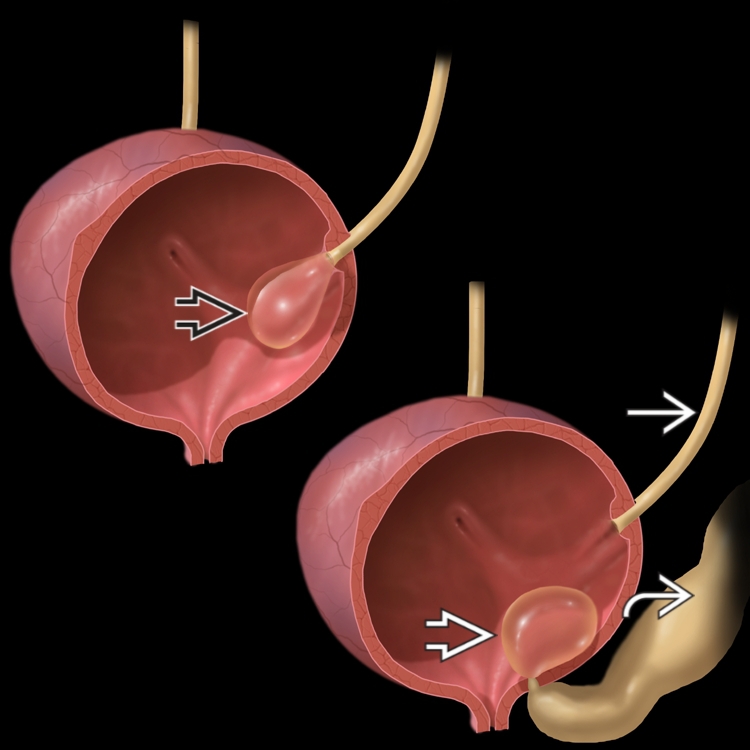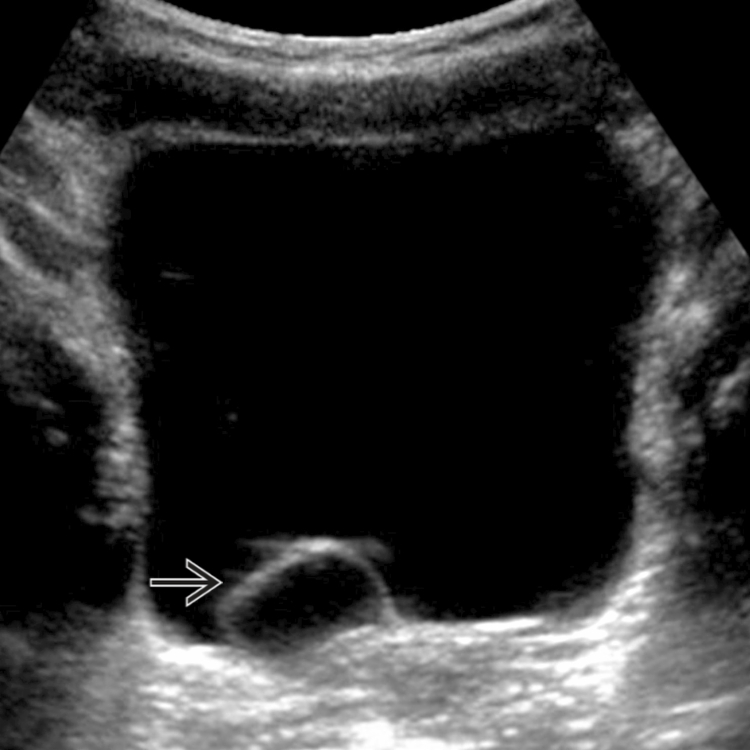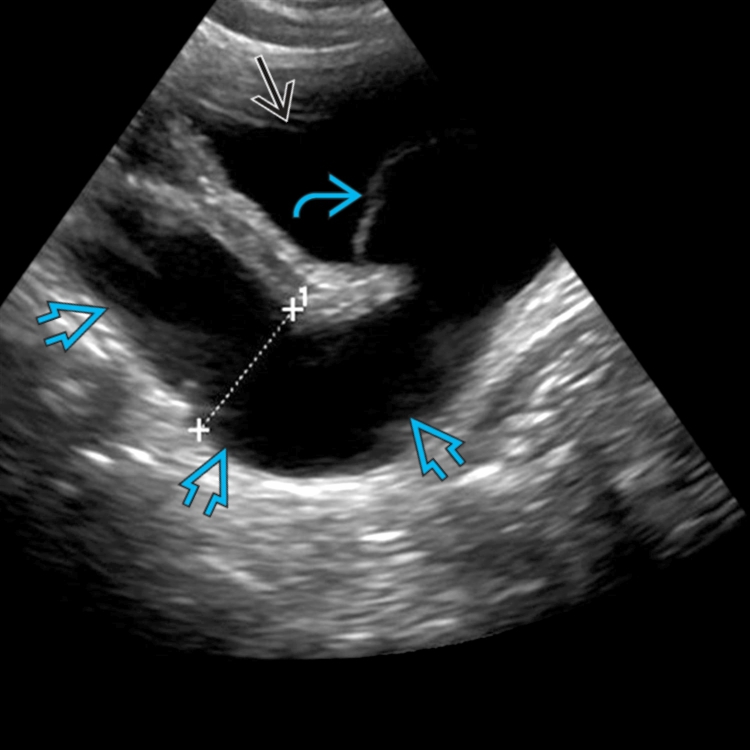KEY FACTS
Terminology
- •
Cystic, balloon-like dilatation of intramural portion of distal ureter bulging into bladder
- •
Orthotopic ureterocele (less common) : Normal insertion at trigone and otherwise normal ureter
- •
Ectopic ureterocele (more common) : Inserts below trigone
- •
Duplicated collecting system in 80%
Imaging
- •
Ectopic: 50% in bladder and 50% in posterior urethra; 10% bilateral
- •
Thin-walled, cystic intravesical mass continuous with distal ureter
- •
Changes in size with degree of ureteral dilation
- •
Dilated ureter in ectopic lower moiety, changes in size with degree of ureteral dilation
- •
Obtain images when bladder is reasonably full
- •
IVP/cystogram
- ○
Orthotopic ureterocele: Cobra head deformity
- ○
Drooping lily sign: Displacement of reflux opacified lower pole moiety by dilated upper pole moiety
- ○
Images during early bladder filling; overfilling may collapse, obscure, or invert low-pressure ureterocele
- ○
- •
T2W MR
- ○
Superior to demonstrate ectopic ureter extending from poorly functioning moiety invisible on other imaging
- ○
Pathology
- •
Single system ectopic ureteroceles: Associated with cardiac and genital anomalies
- •
Complete duplicated system: Commonly upper moiety ureter associated with ureterocele
Scanning Tips
- •
Look for ureterocele in reasonably full bladder if duplex renal system detected
- ○
Ureteroceles can be missed if bladder is empty and ureterocele is collapsed
- ○
- •
Look for ureteroceles at ureterovesical junction, which should always be included in bladder protocol
- •
Ureteroceles are highly dynamic and will “inflate” and “deflate” during peristaltic activity of ureter; adequate scanning time is required to visualize “inflation” stage of ureterocele
 at the trigone in a single system. Lower graphic shows ectopic ureterocele
at the trigone in a single system. Lower graphic shows ectopic ureterocele  with hydroureter
with hydroureter  of the upper moiety, inserting inferior and medial to the lower moiety ureter
of the upper moiety, inserting inferior and medial to the lower moiety ureter  in duplex system.
in duplex system.
 as a balloon-like cyst within the urinary bladder.
as a balloon-like cyst within the urinary bladder.
 within the bladder
within the bladder  at the distal end of the upper pole moiety ureter. The ureter is dilated
at the distal end of the upper pole moiety ureter. The ureter is dilated  .
.
 and nondilated lower moiety
and nondilated lower moiety  .
.










